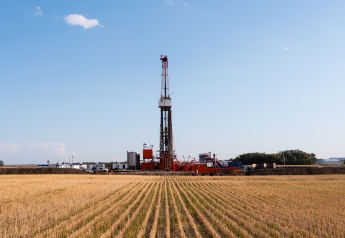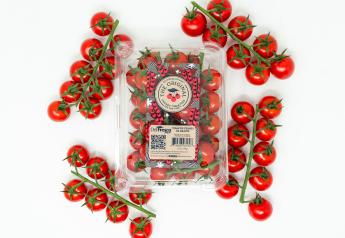Q&A with Victoria Lopez of Fox Packaging

The Packer's Tom Karst visited with Victoria Lopez, marketing manager at Fox Packaging and Solutions about packaging issues during a conversation in February.
Lopez said packaging design can create tradeoffs that may have implications on food waste. Eliminating plastic could influence how much food is lost on the way to market, for example.
“Ultimately, we're trying to feed communities and not landfills,” Lopez said. “Right now, especially in a time, where there's a lot of food insecurity, I think it's a priority to make sure that good nutritious, healthy food choices are reaching home.”
Following are excerpts from the interview:
Packaging is a business that has been around forever. There is a lot of institutional knowledge about how to create a package. But at the same time, there's a lot of innovation. How do you borrow from the past with your packaging design, as you look to innovate as well? What does that process look like? How long does it take to figure out where to go next, relative to new packaging design?
Lopez: A lot of our new packaging designs are inspired by collaboration. It is also keeping in mind that you can over-engineer, and over-design the product as well. It is really about finding the function of your flexible packaging, while highlighting features of it.
At the end of the day, while it needs to be sustainable and needs to be responsible, it [also] needs to be practical and feasible. [Packaging design] needs to be something that is reasonable for fresh produce. And I think that's where we're starting. We have a vast line of products specific to fresh produce such as potatoes, onion and citrus.
And the sustainability conversation that I may have with an apple grower is not going to be the same conversation I have with an onion grower. Sometimes a bag you're already in is the most sustainable packaging application for your commodity.
It seems there are so many variables involved in packaging design, starting with protection features. Is this the case?
It is not only that, but also understanding like how [the package] is going to be used in the packing house, including the automation aspects. The bag may be more lightweight [than previous designs] but is the production equipment ready to handle thinner materials? Lightweighting or downgauging is a huge [trend].
We are filling out these surveys for Walmart or for Whole Foods and several other retailers. They are asking [shippers] how many pounds of packaging have been ordered.
When I am filling these out, I have to actually go into our system, pull those specifications, find a physical sample and measure it to the fourth or fifth decimal in grams. And [we] have to provide that specific information to our customers, and then our customers will then provide that to retailers.
It is being very transparent with the information that [we] were giving to our customers. So, we're becoming very technical about our materials, which I am happy to see. Because it really helps us demonstrate the background work that we are doing for our materials.
Meeting customer needs is not just a simple equation anymore, is it?
It involves the entire supply chain. We have customers that will ask, ‘Victoria, I'm looking for a more sustainable bag’. And I have to ask, what retail shelf is your bag sitting on? Because each retailer has their own goals as well. It's going to take a lot of collaboration, it's not something that one company can accomplish. It's finding and partnering with like-minded organizations who are equally as passionate about finding a solution or offering a step in the responsible direction.
The packaging demands — lightweighting, recyclable, compostable — when you think of all those terms, what are you hearing the most about in terms of interest in packaging and sustainability? Is there any one thing that is the dominant goal at this point? How do you see the industry trending?
I feel like it's recyclability, reduction of plastics, reducing carbon emissions, and reducing the overall total materials used; those are maybe the top four [trends]. But what I'm seeing is, that while those are the most prevalent goals, you still hear a lot of companies who are passionate about one aspect of it like, ‘I would like something more bio-based’ or ‘I just want my packaging to be fully recyclable’ or ‘I want [packaging] to be more geared towards reuse.’
So, it really is matching your sustainability story to your brand's identity and your overall positioning.
For Fox Packaging, we're really reviewing our base materials. Because ultimately, we want to be able to be using post-consumer recycled content. And that is going to be very tricky because for us to be able to do that we need to make sure we partner with organizations that have an FDA letter that their material is suitable for food grade uses.
[Recycled material] is another ballgame on its own. We have been having a lot of interesting conversations with leaders in the recycling industry. And I think all of us, across the entire chain are facing some of the similar challenges; how are we going to make sure that we're getting consistent streams of recycled material? Will it be through a store drop-off program? Is it through cities, through different municipalities and nonprofits? How will we be ensuring that we can be able to have the same amount, quantity, volume of materials and that they come in at the same grade?
If our communities are still kind of floundering around, what is the right way to recycle? And the How2Recycle Program is doing a really good job. I think the iconography of the How2Recycle is part of many retailer programs. You have to be a member of the How2Recycle Programs, especially for private label items. So, it's definitely going to be interesting watching everything move forward, especially as 2025 comes around. Because that's when [retailers] want to see a lot of a lot of this messaging on the packaging.
We have talked about communication to customers, both the shippers and the consumers, How do you communicate the benefits of a package, compared with alternatives? How do you do that when there are so many choices out there?
You can have conversations with members of other organizations, and it is just a proliferation of information. It's overwhelming, [to account] for every consideration that needs to be made. You have that phone call with them. And then later, customers are like, ‘Hey, can you give me give me an outline?’
I have a couple of pitch decks that I send out that give an overview. But the best thing you can do is be honest. I know that when I pitched my position to help create a marketing department here at Fox Packaging, I said, no matter what, I'm going to be honest about everything that we are selling, honest about our products. And I think that's what opens us up for continued education. You can become a subject matter expert [when] you don't know the answer. Right now, especially in this state of the industry regarding packaging, it is okay to say, ‘I don't know, but I'm going to research it, I'm going to look into it.’
Because the answer is different for everyone. You might be in the package that is most sustainable for your product, you might need a specific packing application. So, it is working with what you have and making incremental improvements along the way. That does not take away from the innovation or the technology or the advancements made, it just means our work isn't done yet and that we're still learning.
When you look ahead to packaging issues in 2022, what else do you think of?
It is an exciting time for conversations. Just because the customer is asking all of these questions regarding packaging transitions and more sustainable options, it doesn't mean that they're ready [to make a change]. They're just really looking for information, maybe for the future. That can also be difficult because it's all an investment — investing in your workforce, investing in inventory or investing in the processes to make sure that there's a steady flow to introducing these new products. And I know that it's all going to come together. With COVID, a lot of individuals would have assumed that sustainability would have taken a backseat. But I think it became even more important.







